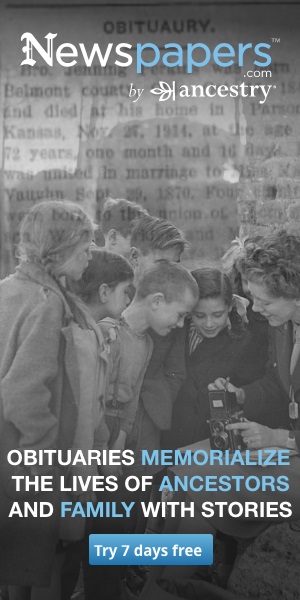U.S., Social Security Death Index, 1935-2014From Jacksonville to Darien on Pole Boats and Timber Rafts
This article is compiled by Julian Williams.
The Creek Indians left the Big Bend area of the Ocmulgee River many things - although they themselves were driven away. They left Indian names for the great streams they fished in and hunted around. They also left the settlers with a feel for the river as they swiftly maneuvered their canoes over the beautiful waters of the Ocmulgee. We find these verses in Ward's History of Coffee County:
Ye say that they have passed away,
That noble race and brave;
That their light canoes have vanished
From off the crested wave;
That 'mid the forests where they roamed,
There rings no hunter's shout;
But their name is on your waters,
Ye may not wash it out.
Two modes of travel and transporting goods on the river appeared before the arrival of the prominent steamboat. These were the pole boat and the timber raft. The pole boat was a flat bottom vessel, built broad but high in the water for ease of propelling over shallow water while carrying a great load. But there really was not an easy way to propel the thing. About ten or twelve strong men with ash poles ten feet or more in length would push these poles against the bottom of the river to provide enough thrust to keep the boat moving. Sometimes the boat would be built with a treaded walkway along the sides so that a man at the front of the boat could push his pole into the muddy bottom of the river and "walk" the boat forward with his feet, his legs doing most of the work. As the boat passed forward beneath him he would of course wind up at the back of the boat. If he did not pull his pole out of the river bottom in time he would wind up in the river. Many times this happened. It also happened when the river men ran against unseen snags, submerged sand bars, tree limbs hanging over the river and other obstacles. One of these obstacles could be an elbow, a hazardous bend in the river or a Devil's elbow, an extremely dangerous sharp turn in the course of the river.
Besides the hazards of the river, the banks often were plagued with some Indians (in the early 1800's) who were not ready to give up their domain to the settlers. There were also settlers who would lie in wait at the top of a bluff to pick off an enemy as he rounded a bend. Catching a fellow up to this type of no-good was difficult to accomplish.
To keep things going, the boat would have a captain. He was called a patroon - this term going way back in time - the master of a vessel or a steersman. The patroon, with a loud and quick voice, and a great knowledge of the river, would stand in the stern of the boat and shout commands to his crew. Two common commands he would yell would be "Bow to the White" meaning head the boat toward the bank where the settlers lived and "Bow to the Indian" meaning head the craft toward the opposite bank, the domain of the Indians. Due to the convenience of shortened terminology (and also to the fact that the command needed to be given oftentimes in emergency situations) the term was shortened to "White!" and "Injun!".
To break any monotony of the journey, and to work in unison, the river men would sing and chant in a harmonious way. This would give them a rhythm in their work that caused the crew to work as a team. This was especially true when heading back up the river against the swift current. Many times the river men had to use hooks (and even block and tackle) heaved into trees to pull the boat forward. People on the banks who were anxiously awaiting their goods brought from Darien and Savannah would often hear these songs from afar and would quickly gather at the river to await the arrival of the boat.
The boats would have names: Jane, Polly Green, and the Willing Maid were examples. Captain John Willcox built many of these boats in his boat yard at Willcox Lake (now Spring Lake).
The timber raft was also an adventure. Logs would be fashioned together in still or eddy water and floated out into the river. Mr. Reno Wells used to tell me about these large craft. He said he remembers when a man was cooking at the stern of the raft when suddenly he was there no more! On a sharp turn, the logs had separated and the poor fellow had just fallen through the crack! He was fished out but probably on occasion, this type of thing would be disastrous.
On reaching Darien, the raft would be taken apart, the logs sold and the raft hands would buy needed items for themselves and the neighbors back home. Of course, they were beset by crafty merchants and also miscreants who lay in wait along the trail back home. The long walk back home was rewarded by the greetings of grateful families, a hearty meal and the thoughtful gaze toward the river that meant there would soon be another eventful trip on a log raft down the Ocmulgee to "Da-ri-an."
Credits:
Fussell M. Chalker, Pioneer Days Along the Ocmulgee;
Judge Ward, History of Coffee County;
the Macon Telegraph;
History of Telfair County, 1807-1987.


